Saturday, July 20, 2024



































































Saturday, July 20, 2024


































































(BPT) - While mindfulness once felt like a wellness trend, it’s become a way of life for adults hoping to maintain healthier routines, be intentional in their work and handle daily stresses efficiently. According to the Centers for Disease Control and Prevention (CDC), mindfulness is the practice of being fully aware of your thoughts and feelings in a moment without judging them or negatively reacting.
But what about kids? Even at an early age, stress can lead to harmful brain development, potentially shrinking brain capacity, locking in fight, flight or freeze responses and escalating mental health disorders. A stressed brain is blocked, frustrated, over-reactive and anxious. The CDC recently published a policy report on youth mental health, which listed daily mindfulness practices as the #2 strategy to drive improvement. Mindfulness and self-regulation can impact a child’s ability to learn, and these skills are crucial for growth inside and outside the classroom. The CDC recommended K-12 classrooms practice mindfulness more regularly, but even early childhood education centers can attest to the positive impact of adopting this mindset.
Bright Horizons, a leading global provider of high-quality early education and child care,
is naturally integrating mindfulness into the daily routines of early learners at hundreds of its child care centers. Utilizing Inner Explorer, a platform designed to support mental health and well-being, Bright Horizons centers implement this daily mindfulness program to help its children learn critical skills like self-awareness, self-regulation and empathy.
“Young children don’t know how to recognize and manage their emotions. They use coping tools available to them until they learn new strategies. Emotional recognition and regulation skills can and should be taught, just like any other set of skills. One of the most valuable strategies we can teach them is mindfulness,” said Bright Horizons Chief Academic Officer Rachel Robertson. “Mindfulness is paying attention on purpose, and we know it can play a crucial role in helping young children manage their emotions and actions. But, it requires intentional support from teachers and parents to develop it. Beginning mindfulness practices at an earlier age also boosts important cognitive skills. It has a significant impact on executive function, creating habits that carry into adulthood and nurturing several skills identified as essential for future success.”
Want to integrate more mindfulness practices
into a child’s daily routine? Robertson has several tips and techniques parents and teachers can use:
• The STOP Strategy: Stop, pause and focus. Take a deep breath. Observe what’s going on around you and inside yourself. Proceed.
• Gratitude Moments: Spend a few moments each day sharing what you are grateful for.
• Nature’s Symphony: Close your eyes and identify as many sounds as possible, from birds chirping to leaves rustling or cars nearby.
• Starfish Breathing: Take five breaths as you trace your hand, one finger at a time.
• Mindful Walk: Pick one sense like sight and notice how many different colors you can see.
• Shake the Sillies Out: Pretend you’re a statue, take a deep breath and shake the energy out!
The possibilities of mindful activities for you and early learners are endless, and the benefits of more intentional practice cannot be denied. To learn more about Bright Horizons, visit brighthorizons.com.
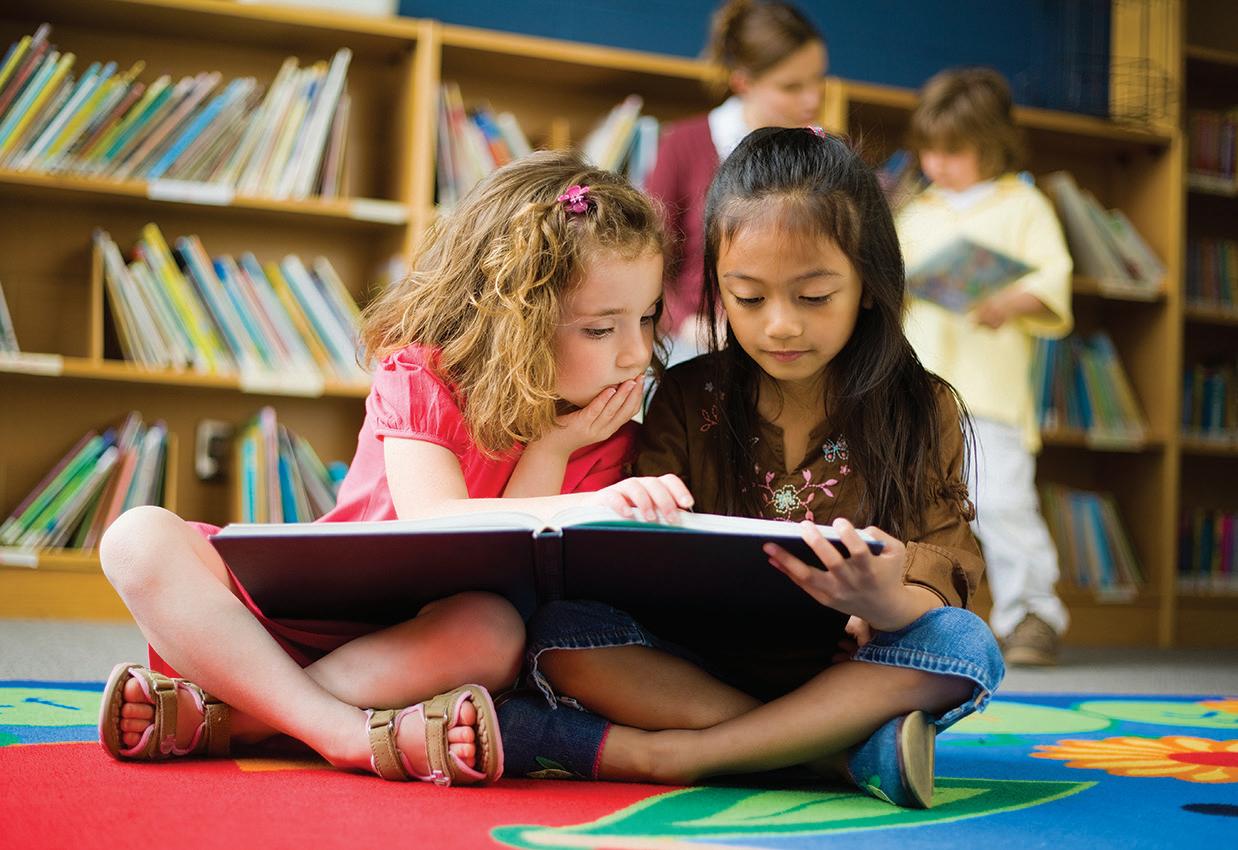
Many variables affect students’ academic performance. These include a willingness to learn, students’ attentiveness, having a great teacher, and kids’ commitment to studying and doing homework. One component of academic performance can be easily overlooked: eyesight.
The M.M. Joshi Eye Institute in India says vision problems in children can affect studies and restrict students’ academic development. Academic performance is directly linked to the ability to see clearly, as vision affects reading, writing, comprehension, and classroom participation. Clarendon Vision Development Center of Illinois advises that a substantial part of a child’s education is
Eacquired through visual processing. When that vision is impaired, it can hinder the ability to learn and absorb information effectively.
Impaired eyesight may cause students to struggle and fall behind. This ultimately can lead to a lack of engagement in classwork and ultimately make them consider giving up, particularly when a student is unaware that it is eyesight and not another factor affecting their ability to learn. Furthermore, poor grades may cause parents to mistakenly conclude a child has a learning disability or is slacking off.
The relationship between eyesight and education underscores the significance of routine
ncouraging children to be physically active can be an important step in helping them to be healthier later in life. The Physical Rehabilitation Network (PRN) says active kids are more likely to become healthy adults. Studies have shown that being physically active and making smart food choices while young can lead to a reduced risk of developing many serious health conditions later in life, which can include diabetes, high blood pressure, obesity, heart disease, and even certain cancers. What’s more, Better Health Victoria in Australia says evidence suggests that physically active children also are more likely to mature into physically active adults. Developing fitness skills early in life is a wise choice. However, one in six kids between the ages of 2 and 19 in the United States are obese, and just one in three are physically active each day, reports the PRN. Families can work together to help kids get on paths to better health and to become more active. This may involve putting limits on screen time and encouraging outdoor play and group active activities like sports or dance. HM247091
eye exams. Intervention can help prevent poor academic performance. Infants often get their first comprehensive eye exams around zero to six months of age. By age three, children should have a second eye exam, says Medical Optometry America. Around age five or six, children should receive a third comprehensive eye exam, just before entering school. Eye exams should then be scheduled at least every two years. These guidelines can be adjusted if any vision problems are detected and more frequent exams are needed.
Eyesight plays a key role in a child’s ability to learn and excel in school. TF248204
Success in school can carry over to successful experiences later in life. That underscores the benefits of developing skills in the classroom. Students learn in their own way, and at times there may need to overcome various obstacles.
The job of education does not fully fall on educators and administrators. Education begins at home. Research has found that kids benefit significantly when parents and other caregivers are strongly involved in a child’s education. A 2020 study published in the Journal of Prevention and Intervention in the Community found that parental involvement in a child’s education is associated with improved academic performance. Specifically, children whose parents are more involved in their educations have higher levels of academic performance than children whose parents were not as involved.
A 2005 study from researchers at the Johns Hopkins University Center of School, Family and Community Partnerships showed that school practices that encourage families to support their students’ math learning at home led to higher percentages of students scoring at or above proficiency on standardized math tests. Additional research indicates the benefits also extend to other subjects and areas of learning, including language comprehension and expressive language skills. With so much to gain from parental involvement in students’ educations, parents can embrace these strategies to get more involved.
• DEVELOP A PARTNERSHIP WITH THE TEACHER. Open communication with the teacher(s) can help parents stay up-to-date on what is going on in the classroom and learn early on where a student may need extra support. Then parents can offer extra guidance if it is feasible, or look into an experienced tutor.
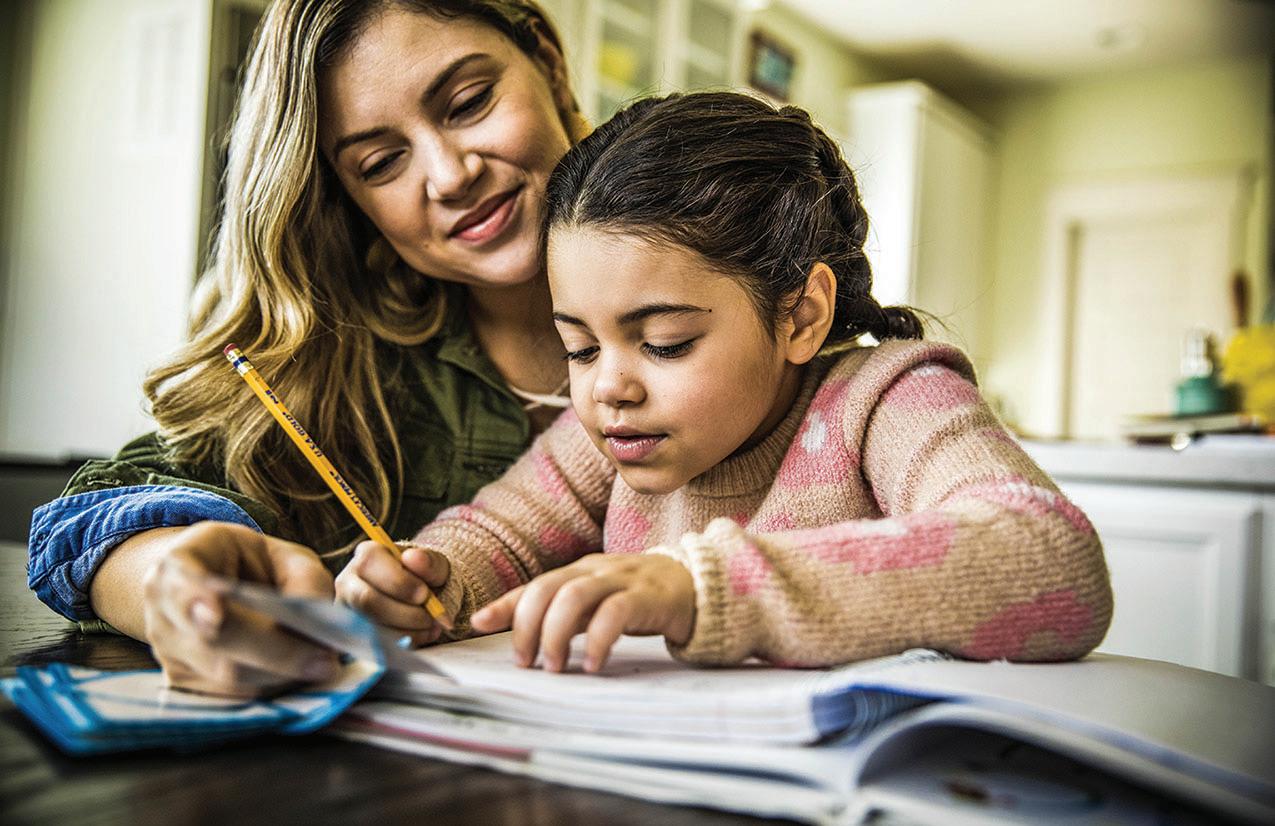
• BE FIRM BUT SUPPORTIVE. Too much academic pressure may cause a child to pull back or even test boundaries, and that can lead to students falling behind in school. Parents must find the right level of involvement and guide their kids without sounding like good grades are “make or break” the relationship.
• ATTEND SCHOOL FUNCTIONS. Parents can go to open houses, back-to-school nights, conferences, and other events held at school to show support and interest in their children’s education. Involved parents also build school-based net-
works this way, which can be called upon if their student needs additional support in the future.
• ESTABLISH A SCHEDULE AT HOME. Students can benefit from a schedule, with regular bedtime, homework time and opportunities to relax. Knowing what to expect and when to expect it can take some of the stress out of learning and studying, according to Nemours health.
Parents working in concert with schools and their children can lead to better academic outcomes. BS244853
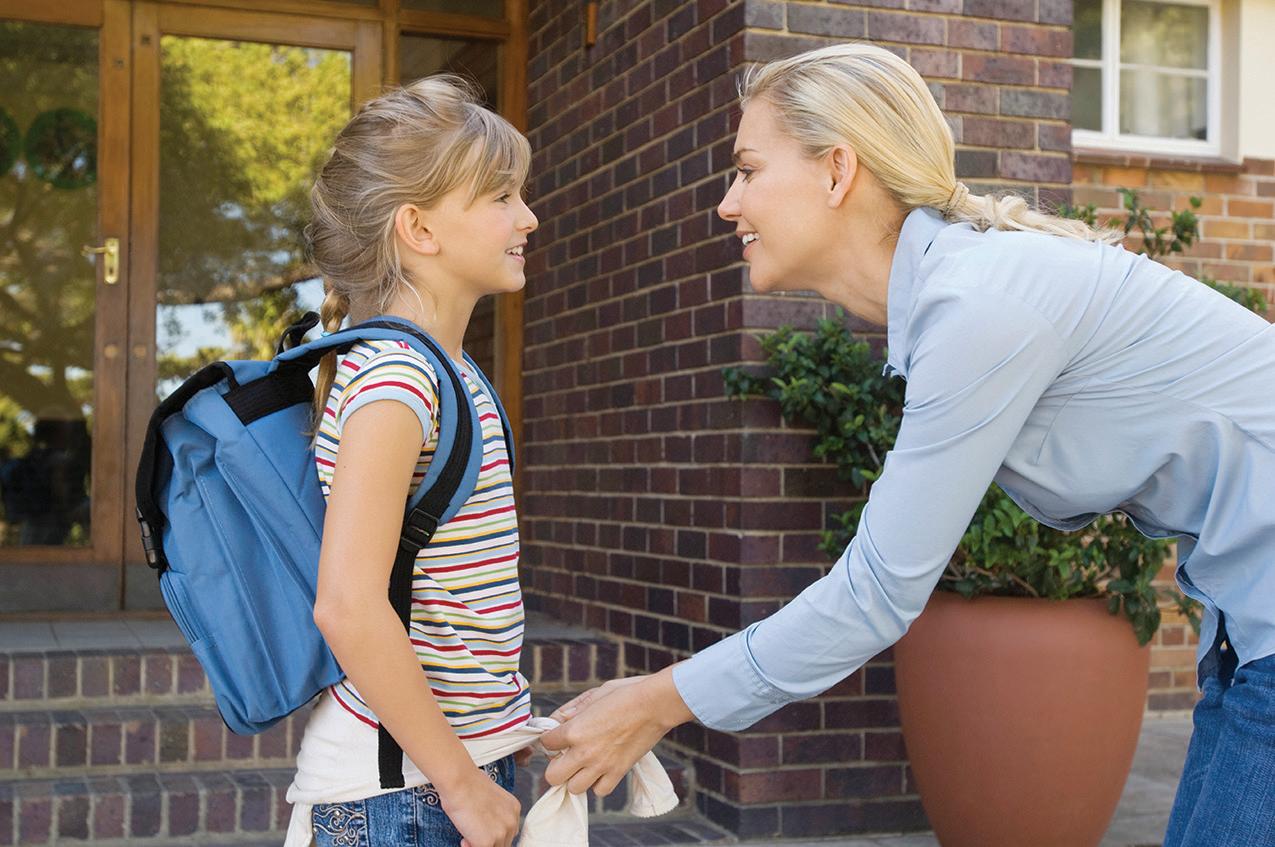
Starting school for the first time or simply returning to campus after another summer break can lead to mixed feelings. Kids may be excited to see their friends every day, but that comes at the price of the end of lazy summer days. The first day of school is on the horizon, and parents may discover their children seem a bit despondent that vacation is coming to a close. Such feelings may stem from more than the end of summer vacation. Some students may be
nervous about going to school. New faces, new experiences and new teachers can lead to a little anxiety. Here are some ways to tame the nerves.
• Do a trial run. Before school starts, do a test run to the drop-off location, bus stop or pick up whomever will be carpooling together. Getting into that routine can help reduce nervousness.
• Participate in meet-and-greets. Some schools offer certain events designed to introduce students even before classes begin. Schools may host ice cream socials or picnic lunches on school grounds, particularly for younger grades. These events give children an opportunity to get to know their classmates before the first school bell rings.
• Take a school tour. If a student is about to start in a new school or will be attending school for the first time, families will want to see if they can get tours of the school and facilities. Just one glance inside can be enough to familiarize students with the lay of the land, which might make things less scary on the first day.
• Check the class list. Some schools do not
provide a list of all students in particular classes, but increasingly those that rely on programs like Google Classroom or Canvas may enable students to see who will be in their class. Children also can use social apps like Instagram and Snapchat to locate school-associated groups to find other students. Parents and their children can brainstorm how to deal with other students who may have been difficult in the past, while also perusing lists for friendly faces.
• Practice conversation skills. Many modern kids have their eyes locked on devices. They may be a little rusty with ice breakers and initiating conversation. Role playing at home can give kids some ideas of how to forge new relationships in the classroom.
• Recognize and take concerns seriously. Parents and other caregivers can be receptive to conversation with children regarding their concerns about starting school. Talking about feelings can help kids tame their nervousness, especially when adults take them seriously.
TF248214

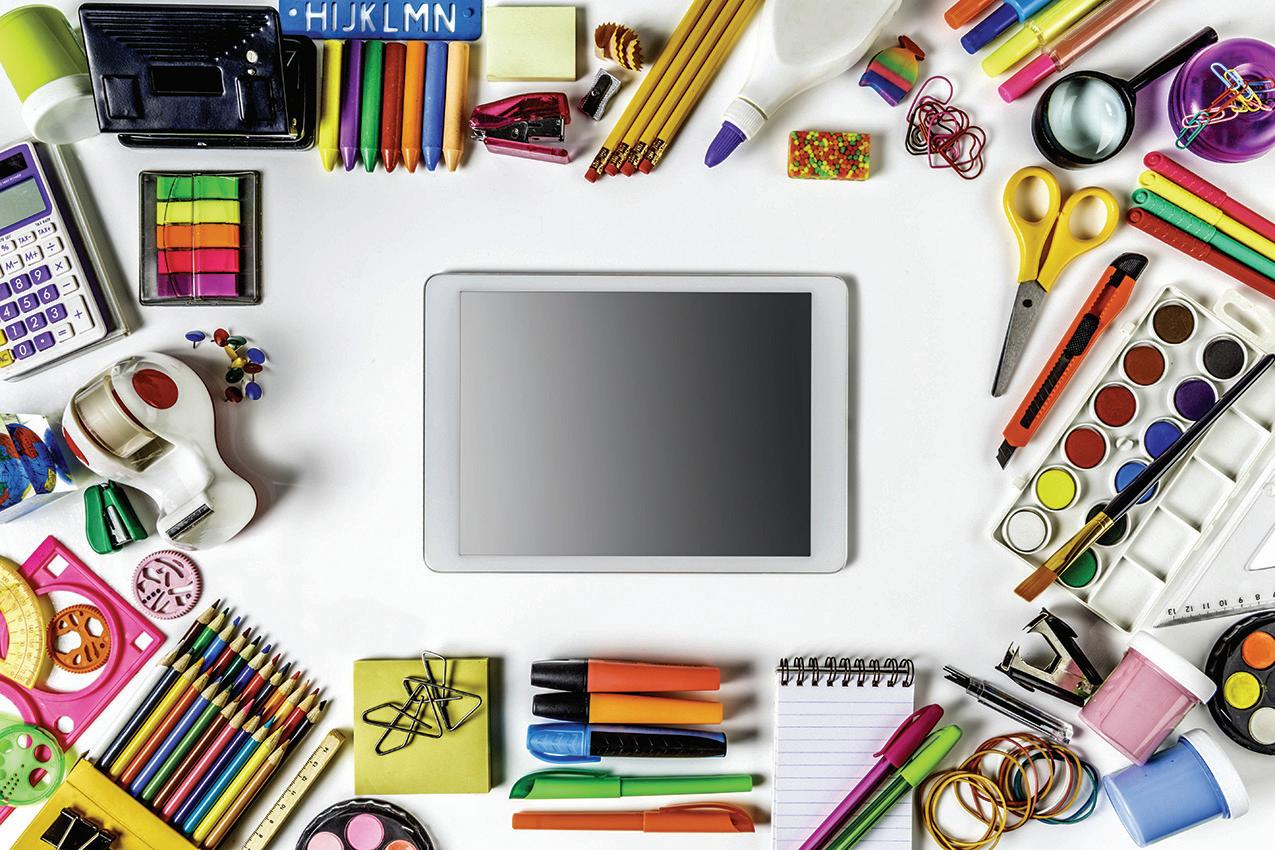
As summer draws to a close, millions of students are preparing to return to school. Some may be excited to return so they can see their friends again each day, while others may lament the loss of carefree days under the warm summer sun. Regardless of which category students fall into, all will need the right supplies to begin the new school
Kindergarten marks most students’ initial introduction to formal schooling, and this exciting year of school is filled with lots of fun and new experiences. Some of the more common supplies kids need for kindergarten include:
• Pencils
• Colored pencils and crayons
• Washable markers
• Erasers
• Pencil case
• Pencil sharpener
• Glue sticks
• Children’s scissors with a blunt tip
• Tissues
• Backpack
• Lunchbox/bag
• Headphones
year on the right foot.
Some teachers now contact students’ parents prior to the start of a new school year to let them know which supplies kids will need during the year. But the following grade-based rundown of supplies can help families get a head-start on back to school shopping.
Elementary school students typically need different supplies based on which grade they’re in. Children between first and third grade may be asked to bring many of the same supplies as students in kindergarten, including pencils, washable markers, colored pencils, glue sticks, and children’s scissors. But first, second and third grade students also may be asked to bring some additional supplies, including:
• Ruler
• Pencil grips
• Index cards
• Wide-ruled notebooks
• A box for supplies, including pencils
Fourth and fifth graders will likely be asked to bring supplies that align more with academics than arts and crafts. Such supplies may include:
• Calendar
• Personal organizer
• Binders
• Loose-leaf paper
• Spiral notebooks
• Calculator
• Pens
• Plastic folders
• Highlighters
• Book covers
By the time children reach middle school and high school, parents are well-versed in back-to-school shopping and likely know what is required. But some of the more unique items parents may be asked to provide for students in these grades include:
• Graphic calculator
• Graph paper
• Permanent markers
• Combination lock
• Protractor
• White-out
• Three-ring binders
Teachers are a great resource that can help students and their parents as they begin back-to-school shopping. Families are urged to reach out to educators or visit school websites to determine if there are any specific items kids will need during the school year. TF248206
Children will soon be trading in the chimes of neighborhood ice cream trucks for the bells of school as summer vacation gives way to the start of a new academic year. August through September is prime back-to-school season, with children all across the country stocking their backpacks and shopping for new school wardrobes.
There is more to getting ready for the start of school than making sure pencils are sharpened and tablets are charged. Parents and children can work together to ensure the transition back to the classroom is as seamless as possible.
ADJUST SLEEP AND WAKE TIMES
Summer vacation often means letting loose of schedules for a while, and that may translate into later-than-normal bedtimes and rising a little later in the morning. Everyone in the household will have to reacquaint themselves with schedules that ensure kids get to school on time. A few weeks before the first day of school, start incrementally going to bed at an earlier time and start waking up earlier each morning. Try to plan out the increments so that by the time the last few days of summer vacation wind down, the family is on target with a waking schedule that mirrors the school schedule.
ACCLIMATE TO BEING AROUND PEOPLE
Although summer vacation may involve trips
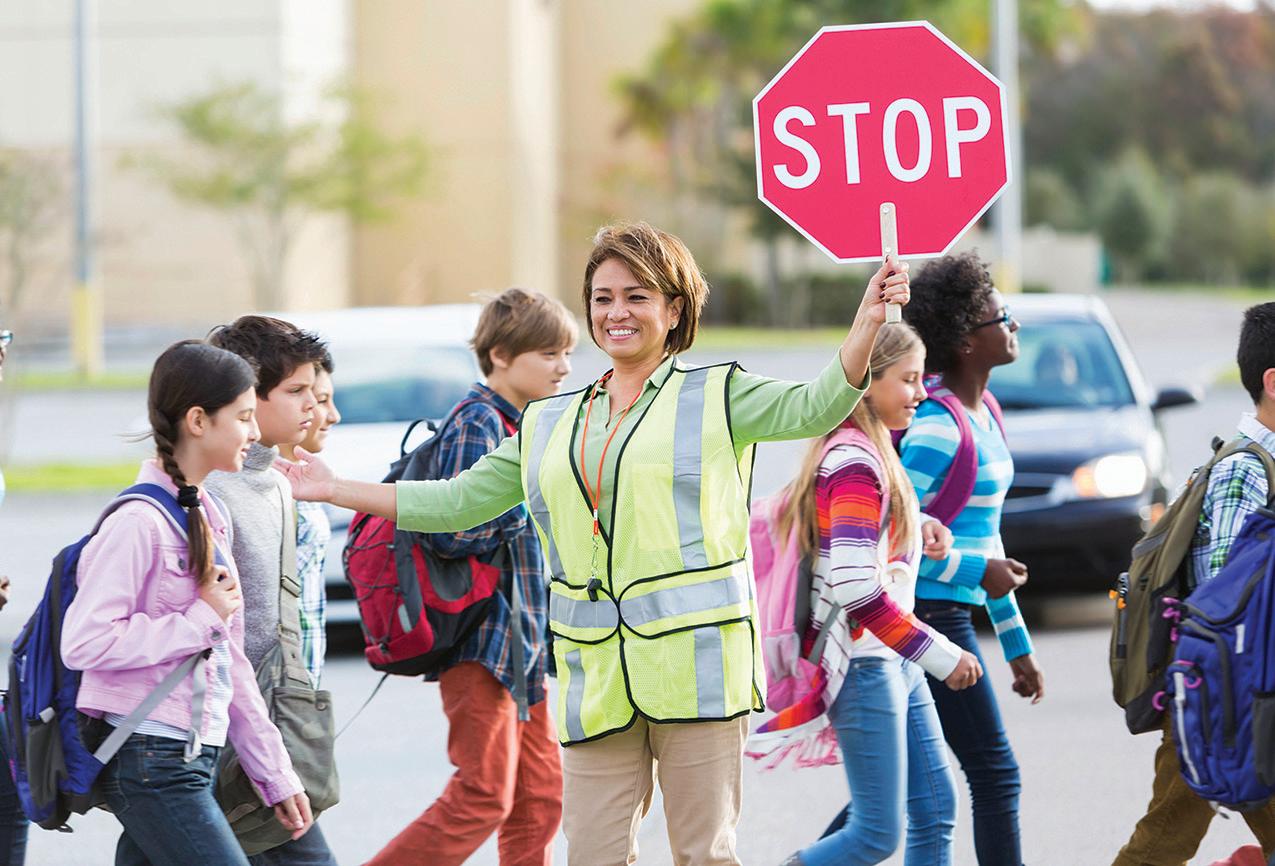
that bring children in contact with other people, it may have been some time since they’ve spent five or more hours per day around 20 to 30 people their age. It may take a transition period to get used to being around a bunch of peers, so families can visit places where there tend to be crowds of kids, such as zoos, aquariums, parks, and trampoline centers. These can be low-pressure locations to dust off social skills.
KNOW THE ROUTE OR PLAN FOR SCHOOL TRANSPORTATION
Students may be driven independently, ride the school bus, walk or bike, or carpool with others to and from school. Families can establish plans so that getting to and from school is not something kids need to worry about. Practice routes and timing, taking into consideration that when schools open there will be much more traffic. Parents can reassure children that there will be a learning curve, but all of the kinks generally get worked out during the first week.
AVOID “SUMMER SLIDE”
Most students don’t want to think about studying, homework and testing while on summer break, but it can be beneficial to stay current on
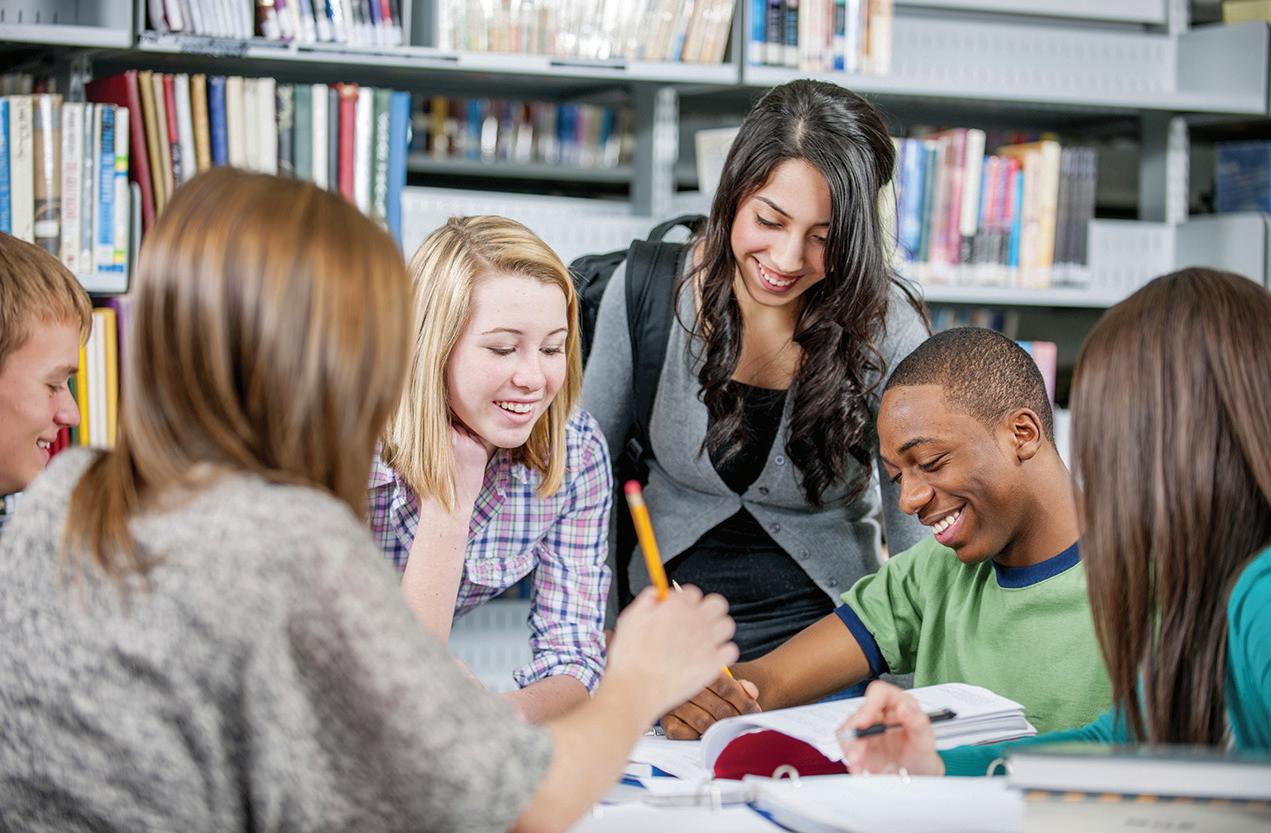
Studying is vital to academic performance. At the dawn of a new school year, students get a fresh start to improve upon or continue strong their study habits. Teachers will be rolling out their curricula, and that may feel overwhelming. However, optimizing study skills can boost confidence in school. These study tips can put students on a path for success.
• Find your optimal study space. The ideal study spot varies from student to student. Some need a quiet nook in the library, while others may prefer the sounds of nature while seated on a park bench. Also, The Princeton Review says that
some lessons. Summer slide refers to the loss of some of the learning achieved during the previous school year over the summer break. Some experts say summer slide is overstated, but it can’t hurt for students to refresh their memories on some math, science and language arts concepts over break so that they will be ready to hit the books when the new school year begins.
PREP FOR SCHOOL LUNCHES
Children and adults can work together to map out healthy eating options for school lunch. Many school districts have lunch plans that can be purchased through an online account. Participating students simply enter a number or swipe a code at checkout. School lunches are built to be nutritionally diverse and have options that even picky eaters will like.
School is right around the corner, and families should get ready for the routine and needs that go with the academic year as the first day draws closer. TF248226
a student doesn’t need just one study space. He or she may find a change of scenery can prompt the brain to retain information better.
• Devise a study plan. Setting goals and a plan of attack allows students to space out their studying over several days. This can reduce stress and make the task seem less cumbersome.
• Avoid cram sessions. Devising a study plan is better than cramming the night before a test. The American Psychological Association says students may perform well on a test for which they’ve crammed, but that doesn’t mean they’ve truly learned the material. Studying with a goal of retaining the material long-term is important.
• Learn how to actively study. Some students think that studying requires reading over the material or highlighting text. Active studying involves engaging with the material and constructing meaning from the text. One way to engage with
the material is to try acting as the teacher and explaining concepts to another person. Creating a study guide or even concept maps also helps one actively study.
• Balance intensity with laid-back study approaches. Students may procrastinate with their studying because they don’t want to devote a lot of time to the task. Instead, they can do shorter sessions mixed with longer sessions of studying. In fact, The Learning Center at the University of North Carolina at Chapel Hill says shorter, intensive study time can be more effective than drawnout studying.
• Ask for help. Asking a teacher or another student for help is not a sign of weakness. It’s a good strategy to develop early on. The longer one waits, the more difficult it may be to catch up on material. Asking for help goes hand-in-hand with setting up a buddy system for studying. Study groups enable students to go over material together, which can provide different perspectives and help the material resonate more effectively. TF248222

Study skills are integral to academic success. Such abilities help students learn more efficiently and effectively, which can lead to better grades on assignments and tests. Developing strong study habits can prepare students for future success in life, as dedication to studying can be mirrored in habits related to job performance.
The desire to study is one component of being involved in the task. However, setting up an environment conducive to studying is another part of this important equation. Students looking to study longer and better may want to re-evaluate study environments at home. Here are some ways to implement positive changes.
• Isolate from interruptions. The first step to setting up a study location is to pick a spot away from the hustle and bustle of the household. While a separate room or home office can be helpful, an out-of-the way nook or similar spot can be just as effective. By dedicating a study
spot, you can train your brain to recognize this is a study area and you may immediately become more focused.
• Keep only pertinent materials nearby. It may be tempting to check your phone or watch videos or television if those devices are close to the study area. Make it stark and outfitted with only what’s necessary for the study session.
• Focus on good lighting. To avoid eye strain and avoid difficulty focusing, make sure the study area has adequate lighting. Lighting behind you will help illuminate the pages of textbooks and additional reading materials. Avoid using computers in dimly lit rooms, as that may aggravate eye strain.
• Aim for ergonomics and comfort. You’ll want to be comfortable while studying, but not so much that you’re falling asleep. Choose a chair that is supportive and keeps you seated in a neutral position.
• Store supplies nearby. Having to
constantly get up and grab supplies increases the risk of distractions adversely affecting your study time. A zippered pouch or a tote bag that contains all of your study materials can be kept within reach.
• Keep a clock in view. A clock should not deter you from studying. Setting deadlines and time constraints on study time can encourage focus. Break down study sessions into chunks of time that are manageable to you.
• Utilize noise effectively. Some people need absolute quiet to study. Others appreciate some white noise or music to sharpen their focus. Identify what works for you and incorporate that into your study area. A fan or a running air purifier can produce enough white noise to drown out distractions.
Establishing a study area at home can help students improve their academic performance. BS244828
Try the world’s most tender steaks, extra-aged 28+ days to perfection. Discover premium quality beef that’s grain-finished for exquisite flavor.
Experience the juiciest air-chilled chicken, tastiest burgers, and so much more.







Butcher’s Cut Filet Mignons (5 oz.)
4 Air-Chilled Boneless Chicken Breasts (5 oz.)
4 Omaha Steaks Burgers (4 oz.) 4 Gourmet Jumbo Franks (3 oz.)
4 Individual Scalloped Potatoes (3.8 oz.)
4 Caramel Apple Tartlets (4 oz.)
1 Omaha Steaks Seasoning (3 oz.)
8 FREE Omaha Steaks Burgers (4 oz.)






